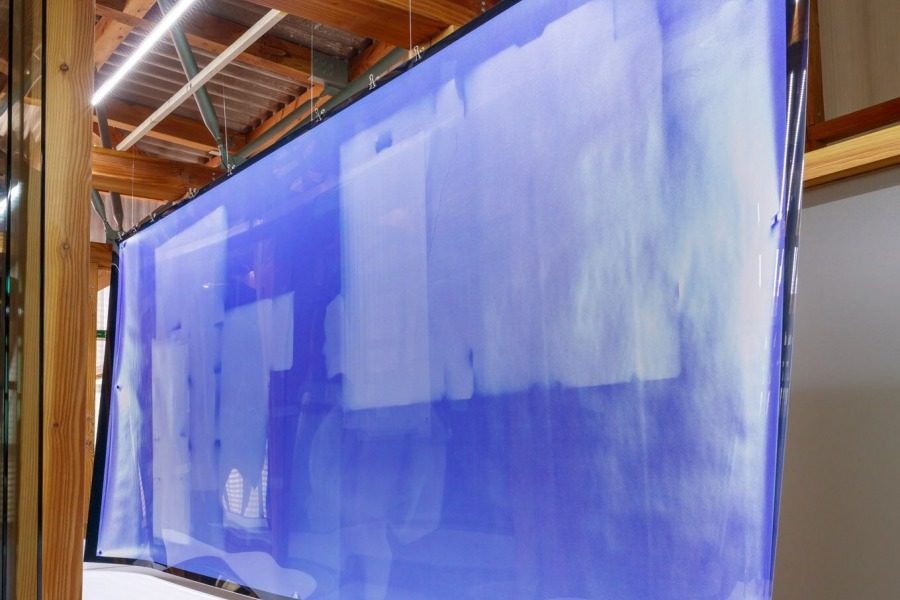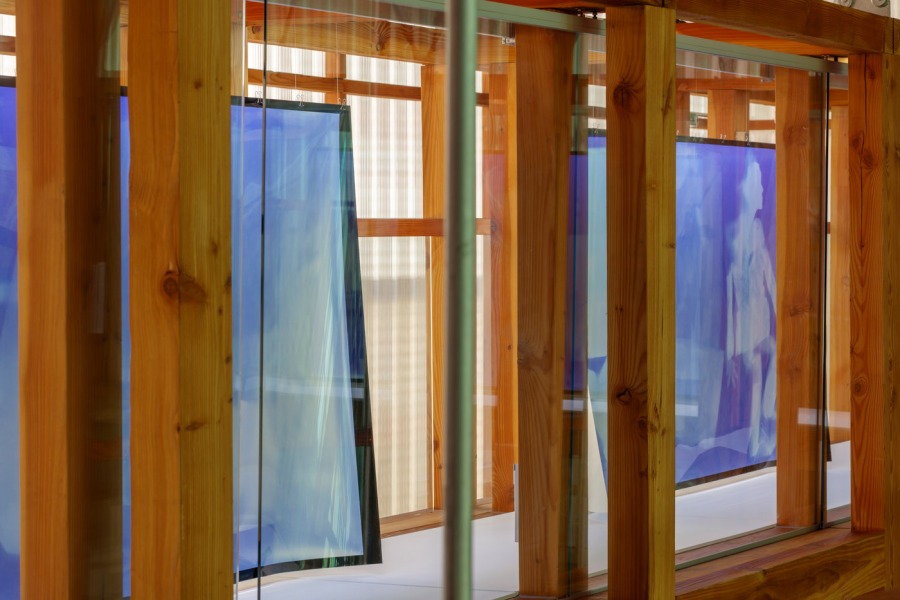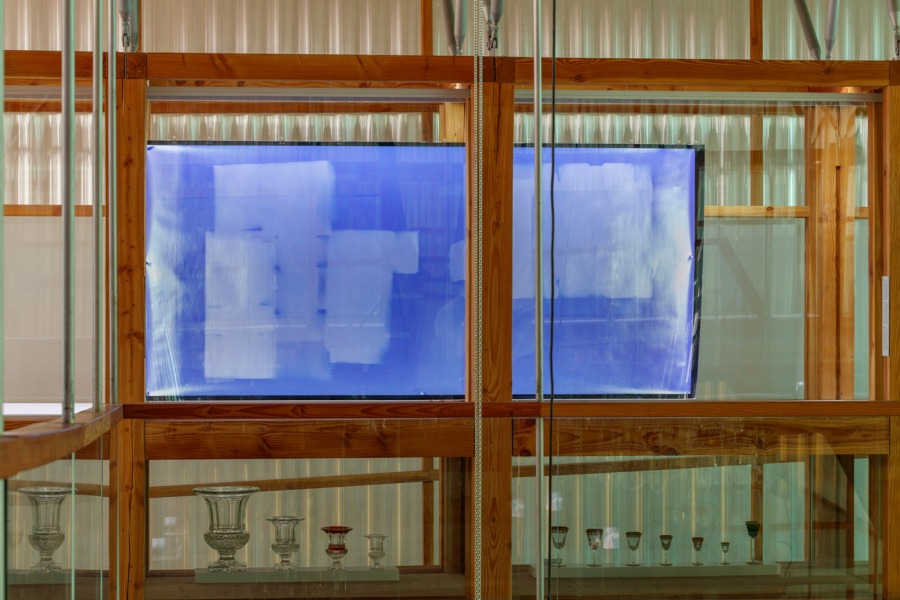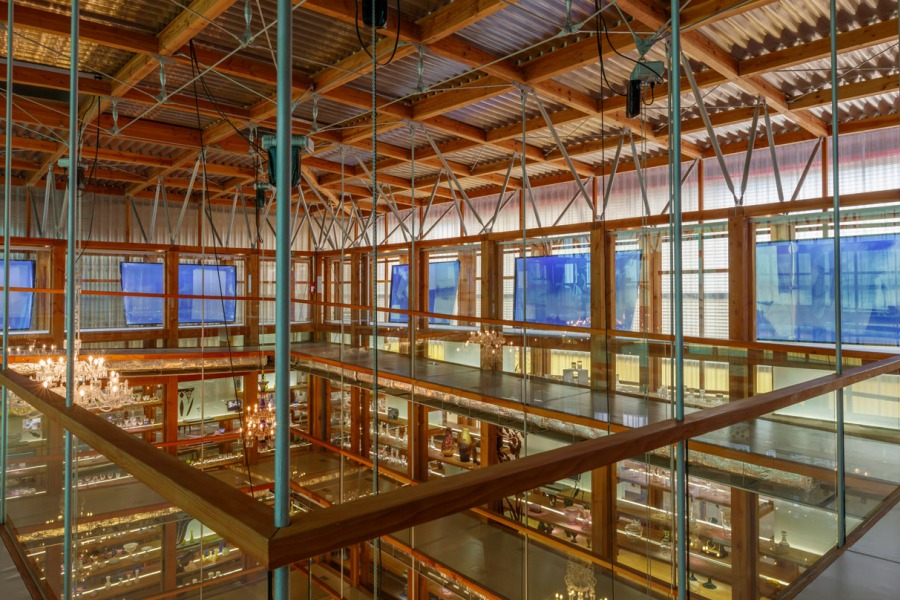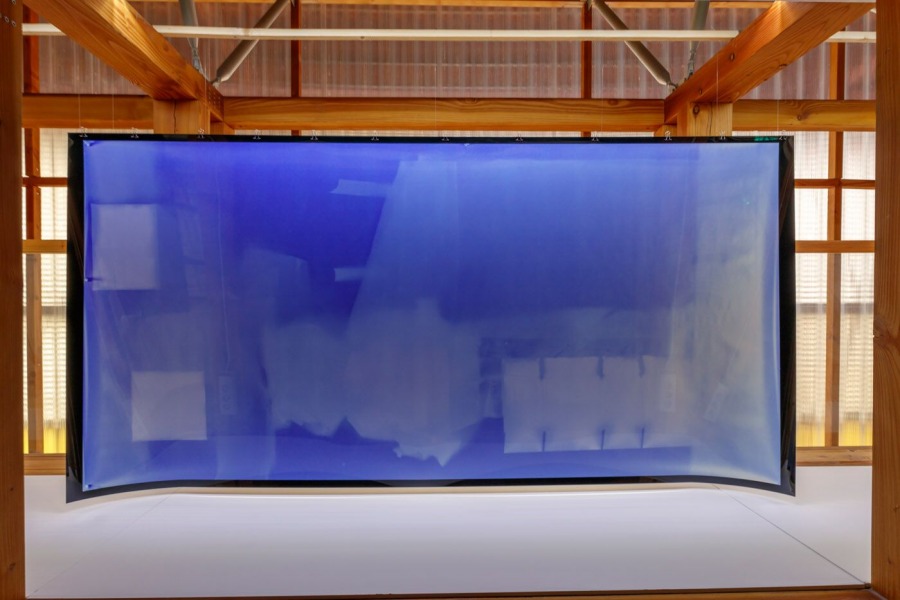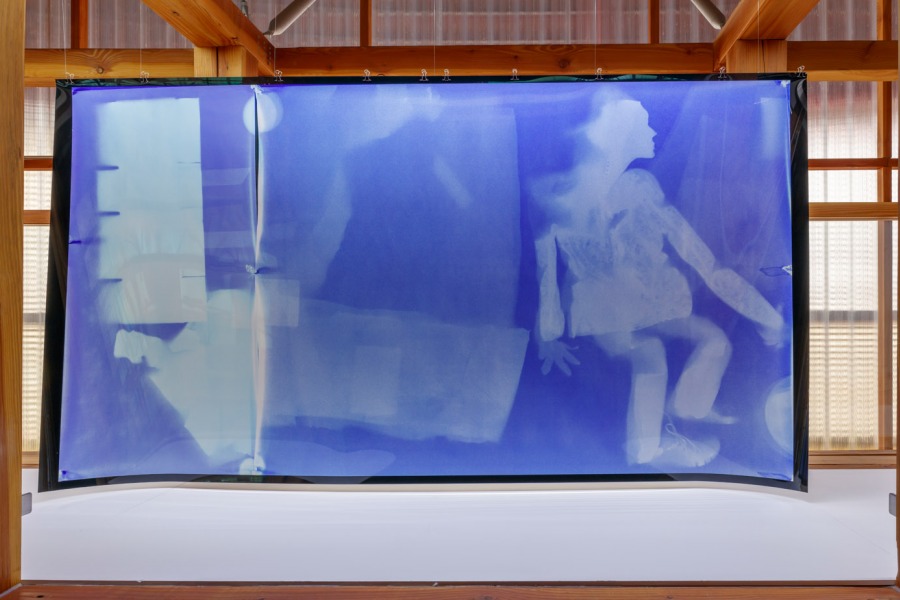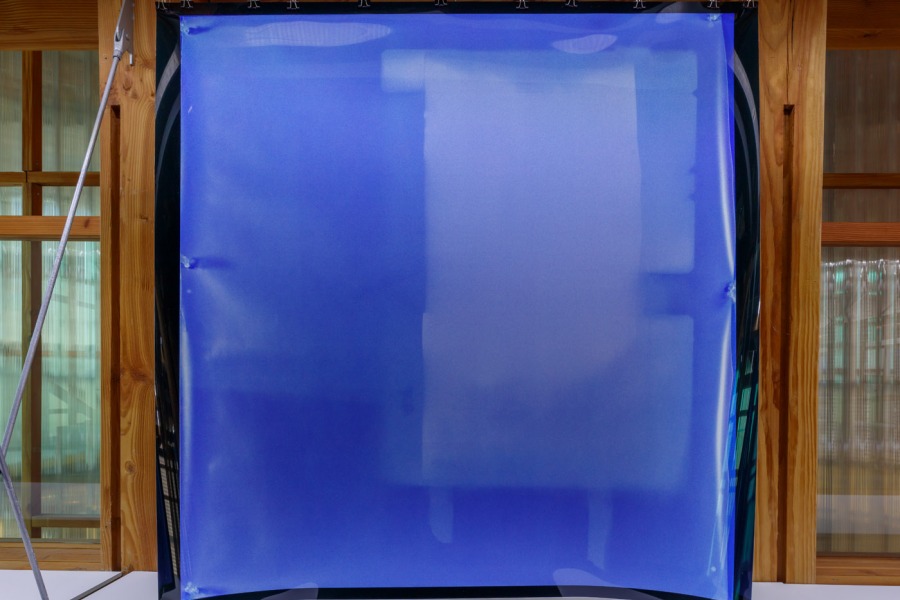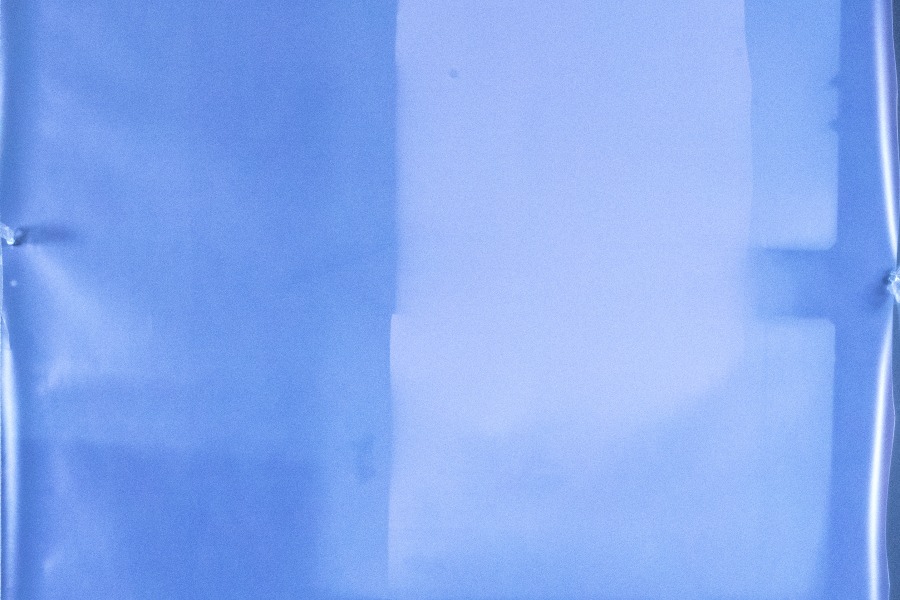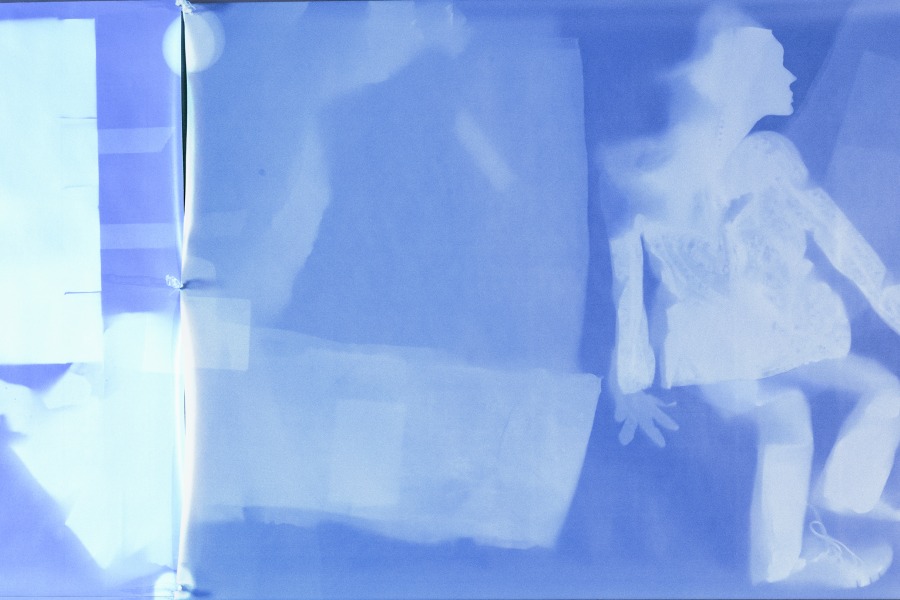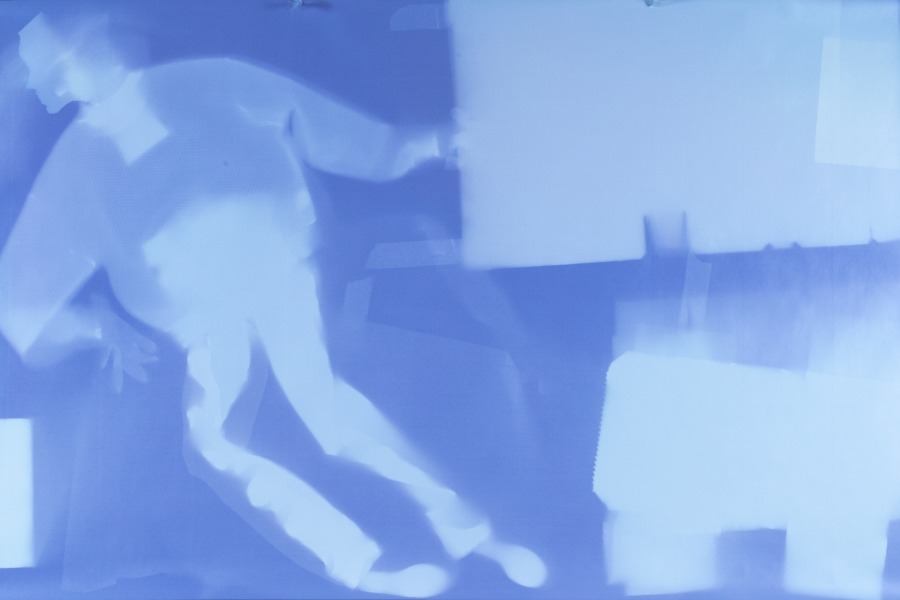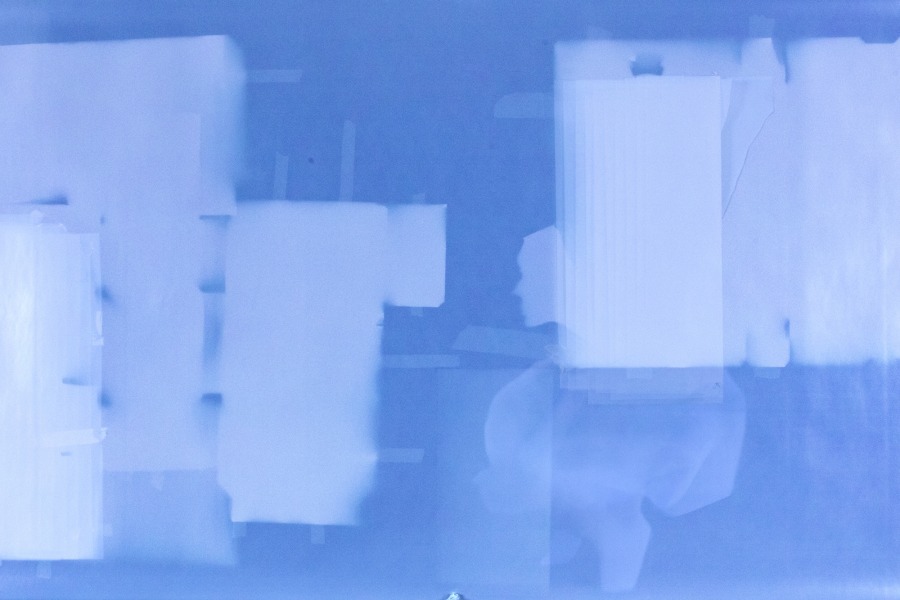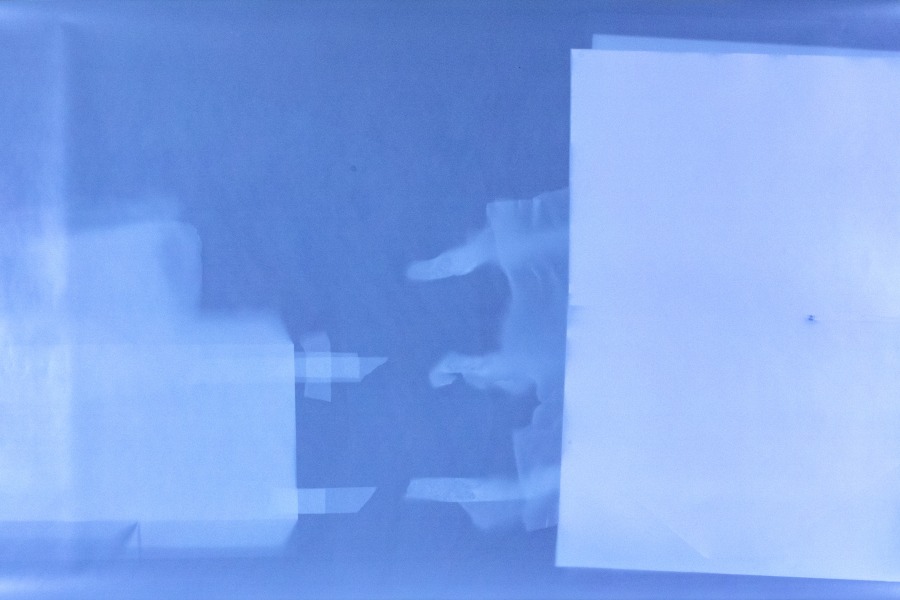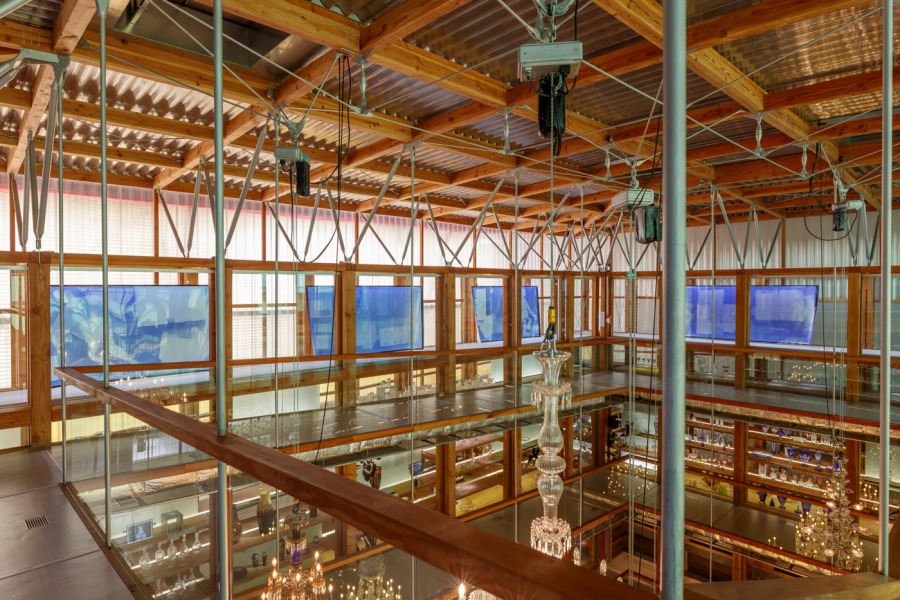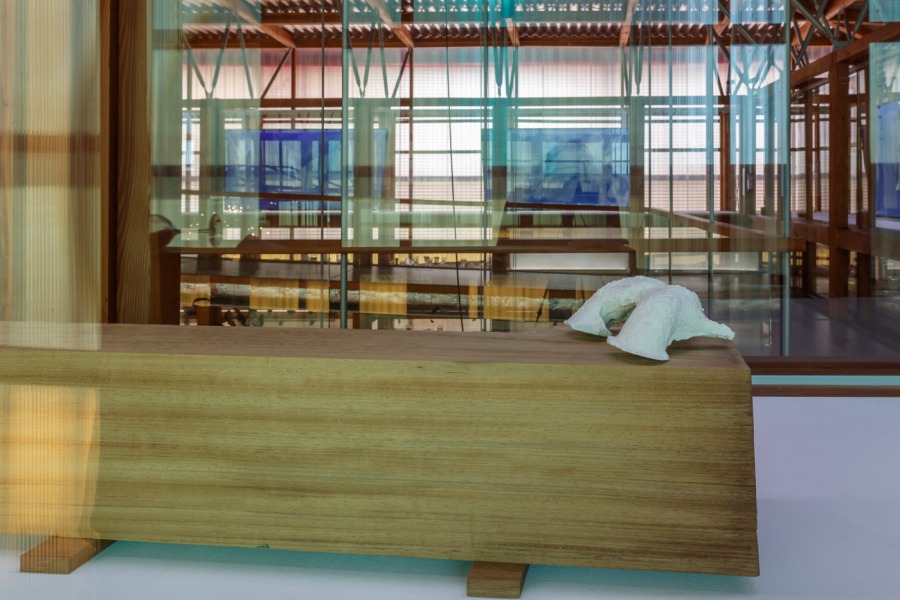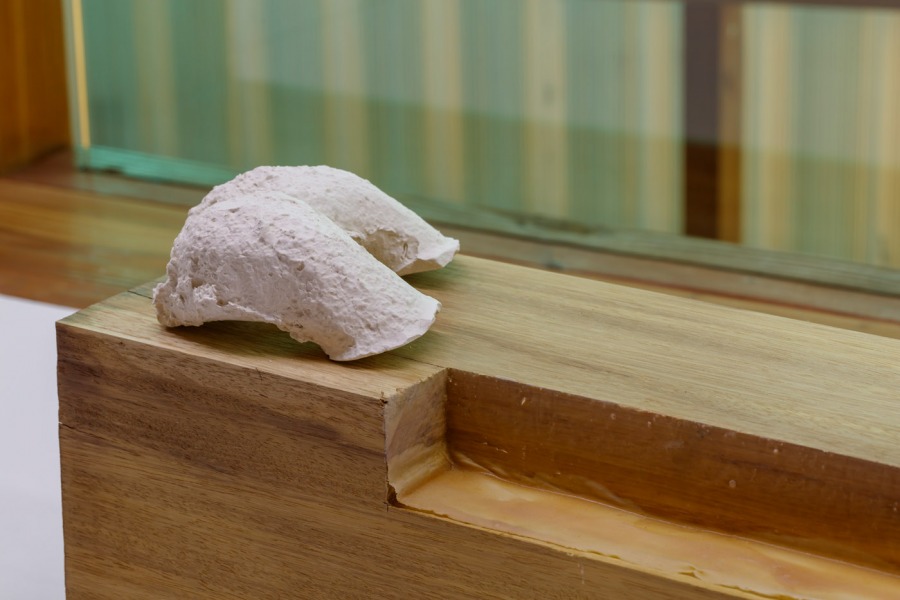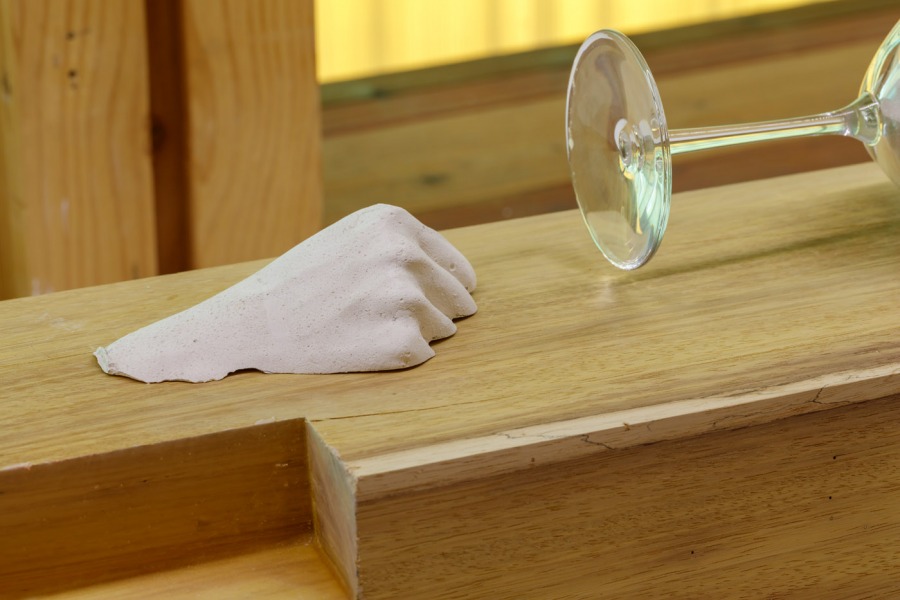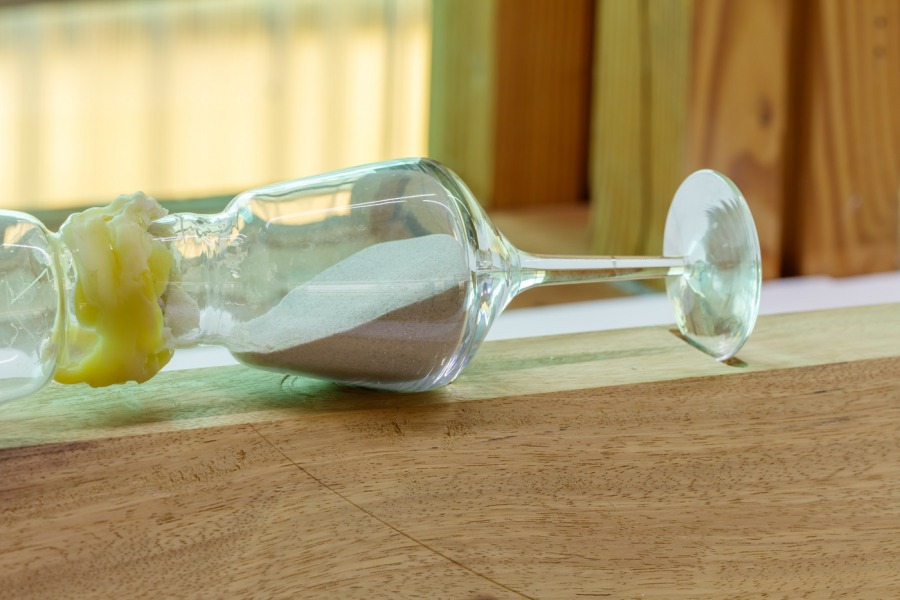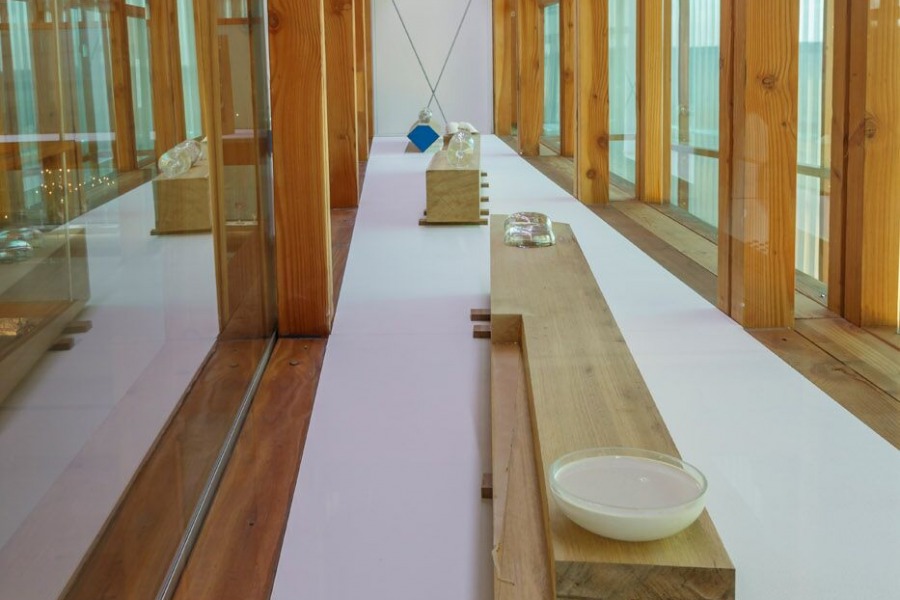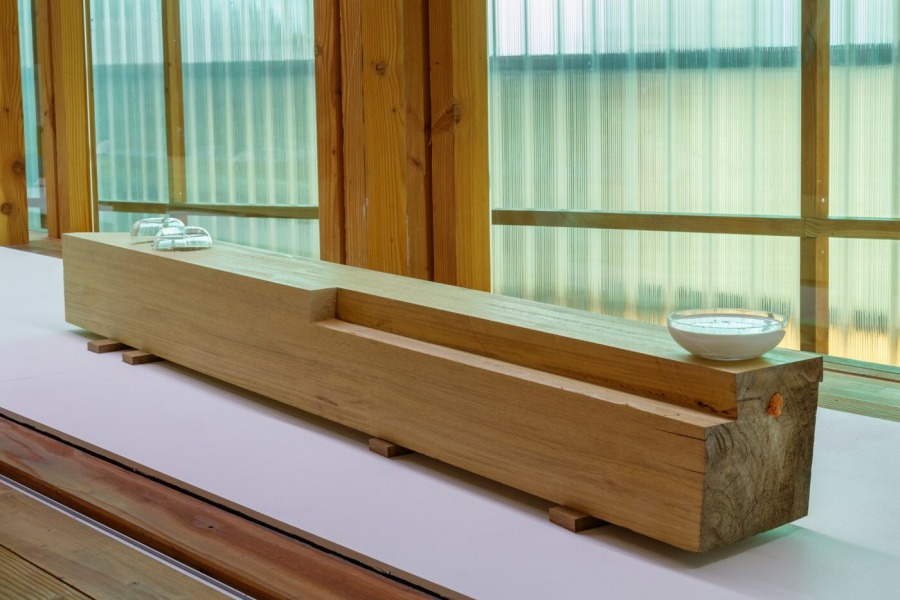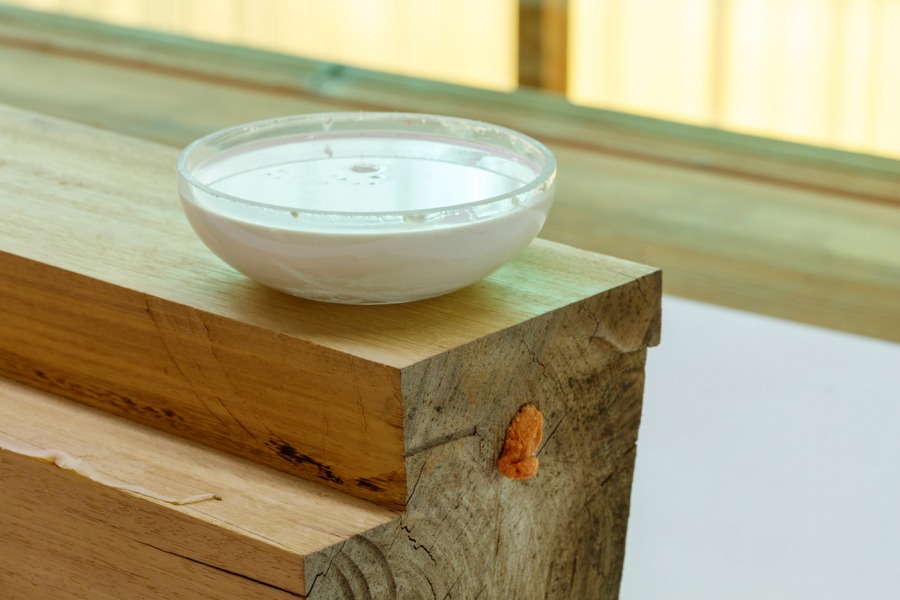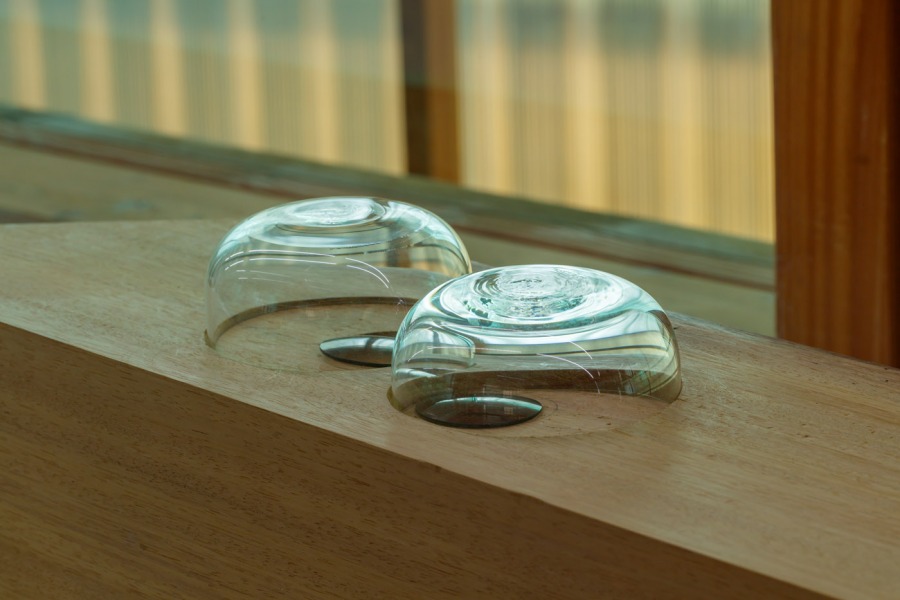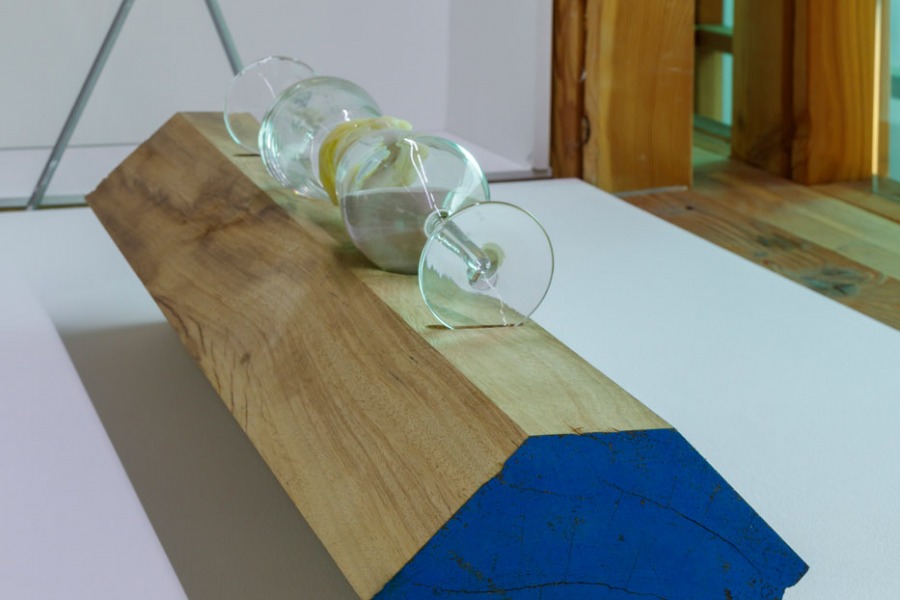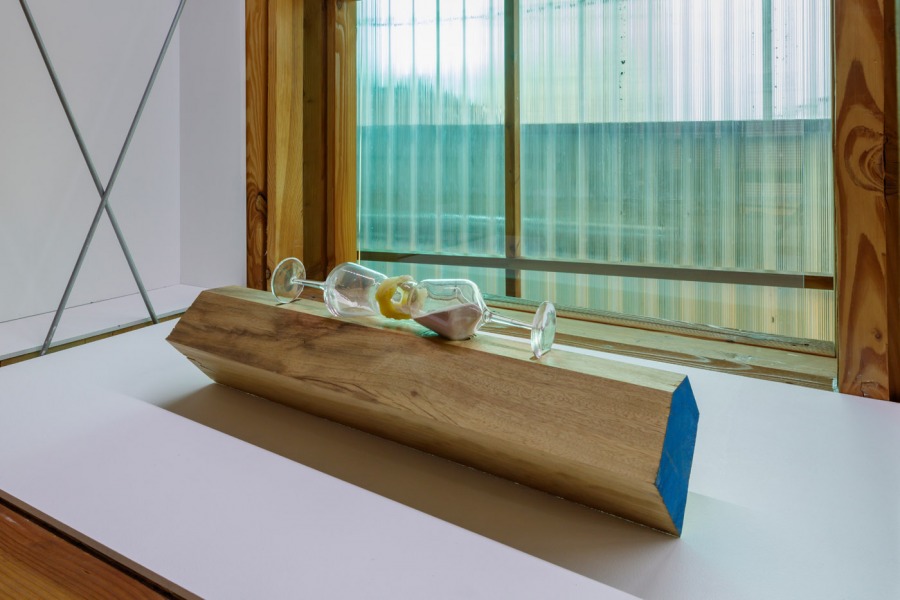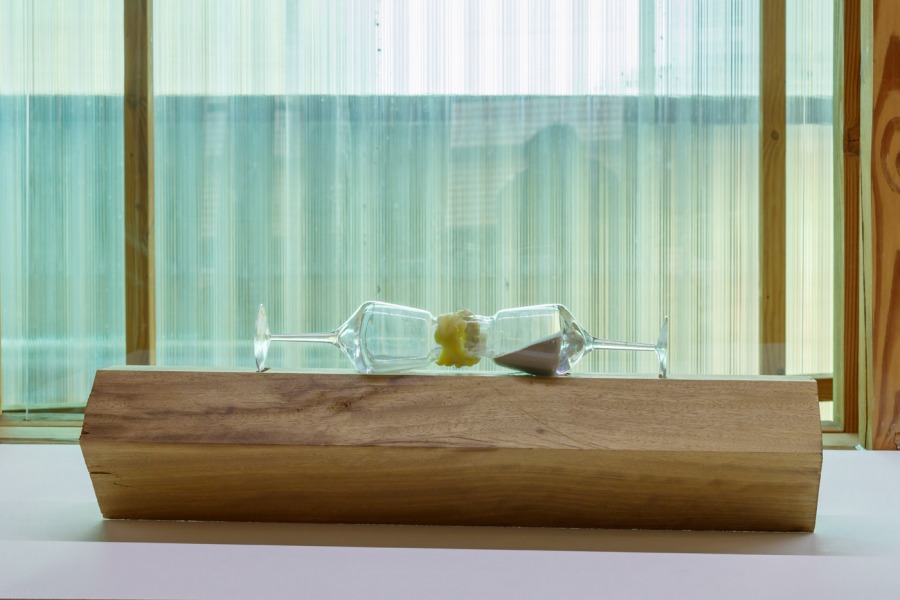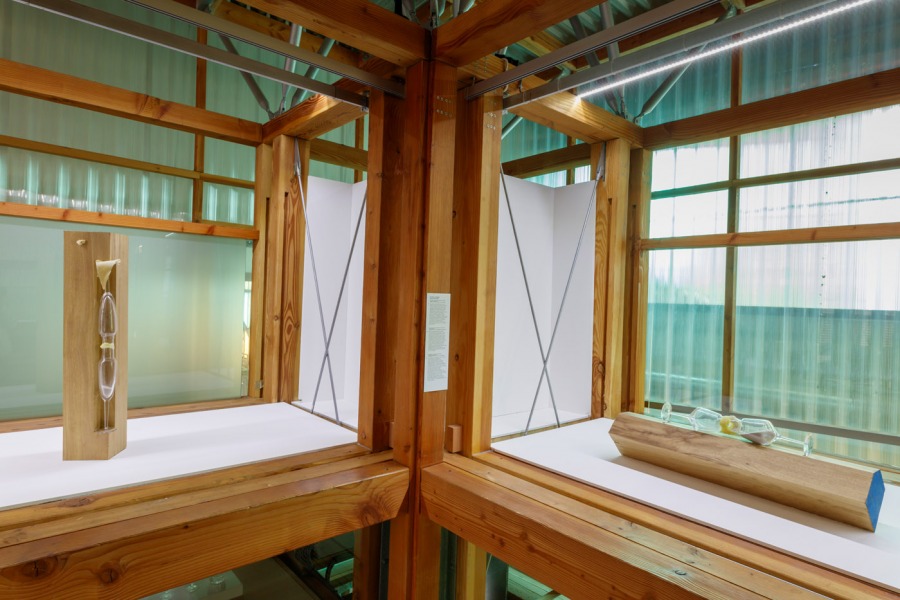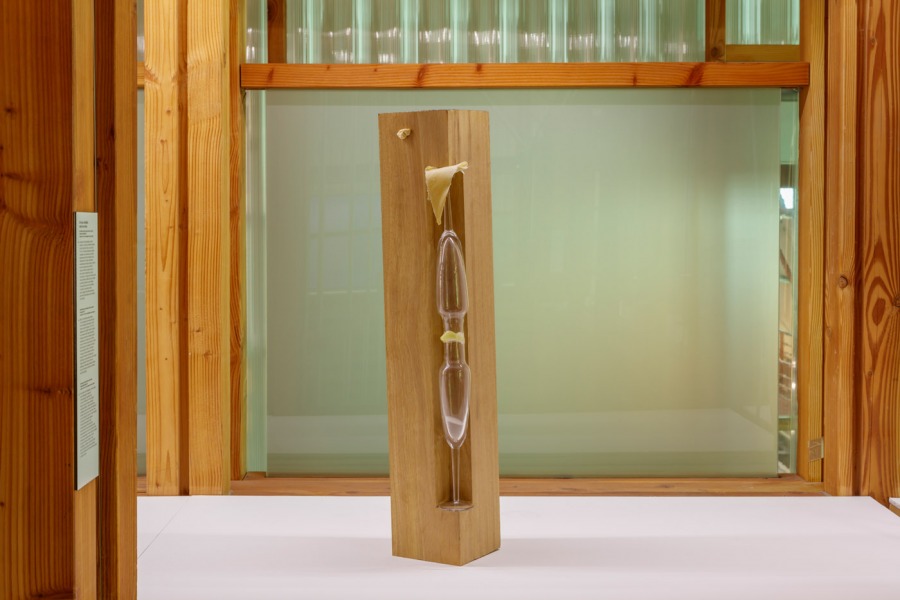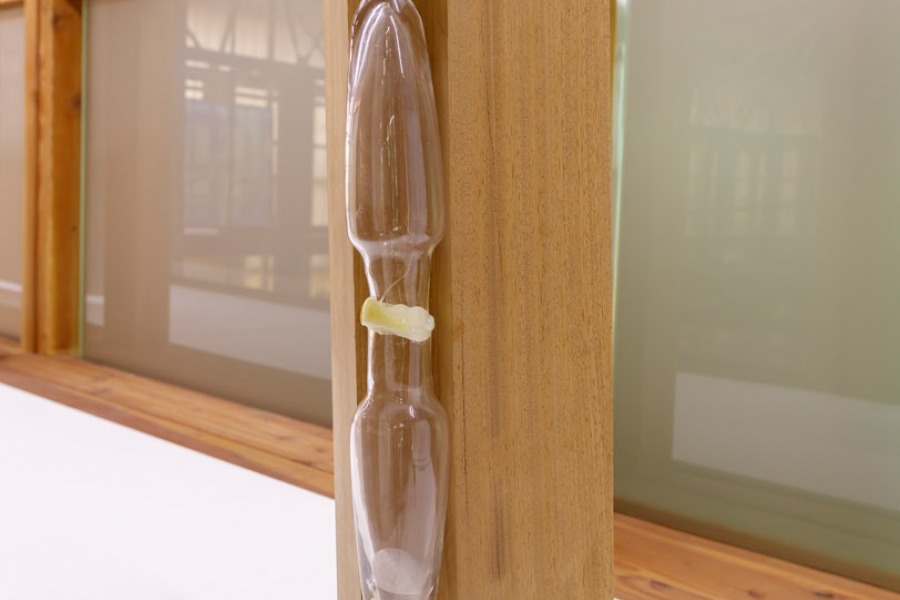Fondation Hermès
Musée et Manufacture du cristal
Saint-Louis Les Bitches (FR)
2018
“A place in the sun”
Curated by Marie Cozette
Synagogue de Delme
This series of photograms is inspired by the silent gathering of a community of women, witnessed by the artist on the streets of Hong Kong during a recent journey to Asia. On Sundays, the city’s (mostly Filipina) live-in domestic maids gather to spend the day sitting together on pieces of cardboard, on the streets and overhead walkways that connect Central district to the Harbour. Together, they form a massive, immobile presence in a public space de ned by transit. Their visibility and power as a kind of occupying force is in marked contrast to their fragile social and economic status. Far from invisible to society on ‘Maids Day’, they assert their role as its mainstay, strong and united. Here, Thu-Van Tran captures these symbolic social and historical contradictions in a powerful, poetic statement of resistance. By exposing the photographic paper with pieces of cardboard collected in Hong Kong, she recomposes a landscape of shadows and light.
The imprint of objects and bodies placed on the photosensitive paper becomes a gurative medium in its own right: a world in reverse, that makes absence the starting point for other potential narratives.
Traces are central to to the rubberwood and crystal sculptures produced by Thu-Van Tran specially for the exhibition, as a counterpoint of the photograms. The new series of sculptures featuring niches containing ‘reject’ crystal objects originally destined for the scrapheap. The works bring together two distinctive materials, each with its own remarkable story. Imported from Indo-China in the 1920s, rubberwood is cultivated intensively for the rubber industry. Each seed grows by invading a host plant, and its mature form is highly dependent on its environment. This process of mutual contamination is central to Thu-Van Tran’s work: materials and objects colour one another, flow, weep and (sometimes) leave traces of their passing.
‘Reject’ crystal objects originally destined for the scrapheap, but recovered by the artist from the workshop, take their place in niches within the wooden sculptures. Thu-Van Tran deliberately uses ‘imperfect’ objects to colonise the rubberwood, itself charged with powerful metaphorical signi cance. Rubberwood grafts were planted on a massive scale in Vietnam by and for the French rubber industry in the 1920s. When scored, the trunks release a white liquid: the raw material for rubber. The substance is not sap, but the tree’s defence mechanism, produced to heal the scars in icted upon it. By hollowing out shapes destined to accommodate foreign bodies within the wood, the artist establishes a fertile dialogue between materials, forms and histories that would never otherwise have come together.
by Marie Cozette
